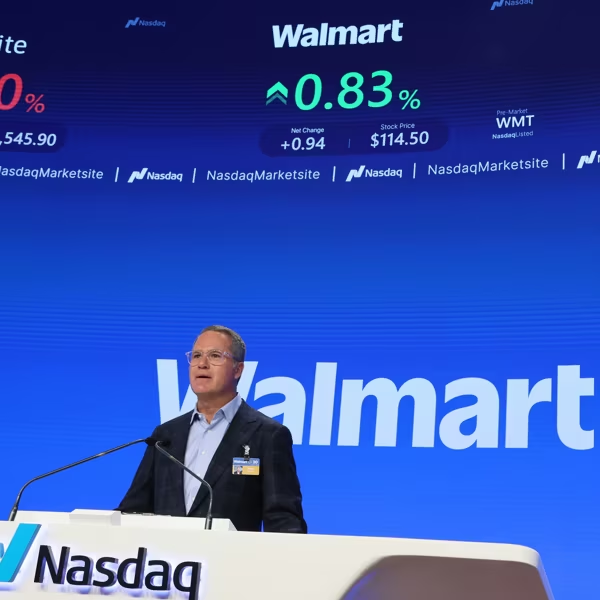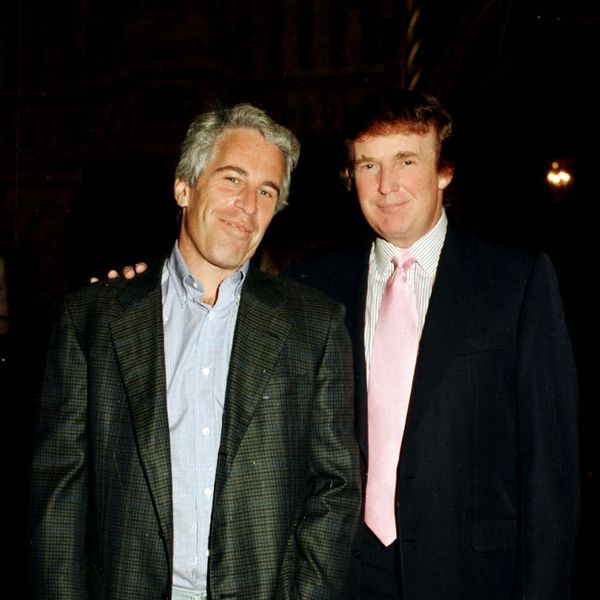TransCanada Whistleblower Spurs New Probe of Pipeline Giant's Safety Record
Activists say latest allegations prove the corporation 'cannot be trusted' to operate its existing network, much less build new pipelines
Based on evidence provided by a whistleblower, Canada's National Energy Board (NEB) is investigating pipeline giant TransCanada--the company behind both the Keystone XL and Energy East proposals--for safety-code violations, according to exclusive reporting by the Reuters news agency.
The energy regulator, which just finished accepting close to 2,000 applications from people wishing to participate in hearings on TransCanada's proposed Energy East pipeline project, is reportedly looking into up to a dozen new allegations of pipeline safety-code violations--including "faulty or delayed repairs, sloppy welding work, and a failure to report key issues" to the nation's energy regulator.
" Whistleblowers are extremely rare in this industry. The fact that there are now two raising such serious concerns combined with TransCanada's horrible safety record should bring an unprecedented level of scrutiny from the National Energy Board."
--Mark Calzavara, Council of Canadians
What's more, notes Reuters, "it marks the second time in recent years the regulator has probed safety practices at Canada's second-largest pipeline company following complaints by a whistleblower."
TransCanada currently operates about 42,253 miles of natural gas pipelines across the continent, as well as the 2,639-mile section of the Keystone XL tar sands pipeline that has already been built. Several of those have ruptured in recent years.
In 2012, former TransCanada engineer Evan Vokes blew the whistle on his employer as he raised concerns about the competency of some pipeline inspectors and the company's lack of compliance with welding regulations set by the NEB.
The following year, the watchdog group Public Citizen reported that dozens of anomalies, including dents and welds, had been identified along a 60-mile stretch of the southern segment of the Keystone XL pipeline, north of the Sabine River in Texas.
The current investigation also came to light via a different whistleblower who asked not to be identified but allowed Reuters to view correspondence between him or herself and the NEB.
Reuters journalist Mike De Souza reports:
According to a summary document prepared by a senior NEB official, the investigation was reviewing an allegation that TransCanada took several months to repair pipeline damage caused by a construction crew in May 2013 about 150 km (93 miles) north of Calgary, and also failed to report it to the regulator.
Another allegation describes sloppy repairs to a major line--the North Central Corridor--that serves companies in the oil sands. This natural gas pipeline had been damaged following an October 2013 explosion near Wabasca, Alberta.
Such incidents have long raised "serious questions about TransCanada's ability to safely build and maintain pipelines," the Council of Canadians, which opposes TransCanada's attempts to expand its network, has said.
These latest revelations only support that position, explaining "why TransCanada has had five major pipeline ruptures in the past sixteen months," Mark Calzavara, Council of Canadians regional organizer for Ontario, Quebec, and Nunavut, told Common Dreams in an email.
"Whistleblowers are extremely rare in this industry," he said. "The fact that there are now two raising such serious concerns combined with TransCanada's horrible safety record should bring an unprecedented level of scrutiny from the National Energy Board. TransCanada has amply demonstrated that they cannot be trusted to build and operate the proposed Energy East pipeline."
News outlets reported last month that TransCanada would seek U.S. State Department approval for the $600 million Upland Pipeline, which would begin in northwestern North Dakota and go north into Canada. It would transport up to 300,000 barrels of oil daily, connecting with other pipelines including the Energy East pipeline across Canada.
An Urgent Message From Our Co-Founder
Dear Common Dreams reader, The U.S. is on a fast track to authoritarianism like nothing I've ever seen. Meanwhile, corporate news outlets are utterly capitulating to Trump, twisting their coverage to avoid drawing his ire while lining up to stuff cash in his pockets. That's why I believe that Common Dreams is doing the best and most consequential reporting that we've ever done. Our small but mighty team is a progressive reporting powerhouse, covering the news every day that the corporate media never will. Our mission has always been simple: To inform. To inspire. And to ignite change for the common good. Now here's the key piece that I want all our readers to understand: None of this would be possible without your financial support. That's not just some fundraising cliche. It's the absolute and literal truth. We don't accept corporate advertising and never will. We don't have a paywall because we don't think people should be blocked from critical news based on their ability to pay. Everything we do is funded by the donations of readers like you. Will you donate now to help power the nonprofit, independent reporting of Common Dreams? Thank you for being a vital member of our community. Together, we can keep independent journalism alive when it’s needed most. - Craig Brown, Co-founder |
Based on evidence provided by a whistleblower, Canada's National Energy Board (NEB) is investigating pipeline giant TransCanada--the company behind both the Keystone XL and Energy East proposals--for safety-code violations, according to exclusive reporting by the Reuters news agency.
The energy regulator, which just finished accepting close to 2,000 applications from people wishing to participate in hearings on TransCanada's proposed Energy East pipeline project, is reportedly looking into up to a dozen new allegations of pipeline safety-code violations--including "faulty or delayed repairs, sloppy welding work, and a failure to report key issues" to the nation's energy regulator.
" Whistleblowers are extremely rare in this industry. The fact that there are now two raising such serious concerns combined with TransCanada's horrible safety record should bring an unprecedented level of scrutiny from the National Energy Board."
--Mark Calzavara, Council of Canadians
What's more, notes Reuters, "it marks the second time in recent years the regulator has probed safety practices at Canada's second-largest pipeline company following complaints by a whistleblower."
TransCanada currently operates about 42,253 miles of natural gas pipelines across the continent, as well as the 2,639-mile section of the Keystone XL tar sands pipeline that has already been built. Several of those have ruptured in recent years.
In 2012, former TransCanada engineer Evan Vokes blew the whistle on his employer as he raised concerns about the competency of some pipeline inspectors and the company's lack of compliance with welding regulations set by the NEB.
The following year, the watchdog group Public Citizen reported that dozens of anomalies, including dents and welds, had been identified along a 60-mile stretch of the southern segment of the Keystone XL pipeline, north of the Sabine River in Texas.
The current investigation also came to light via a different whistleblower who asked not to be identified but allowed Reuters to view correspondence between him or herself and the NEB.
Reuters journalist Mike De Souza reports:
According to a summary document prepared by a senior NEB official, the investigation was reviewing an allegation that TransCanada took several months to repair pipeline damage caused by a construction crew in May 2013 about 150 km (93 miles) north of Calgary, and also failed to report it to the regulator.
Another allegation describes sloppy repairs to a major line--the North Central Corridor--that serves companies in the oil sands. This natural gas pipeline had been damaged following an October 2013 explosion near Wabasca, Alberta.
Such incidents have long raised "serious questions about TransCanada's ability to safely build and maintain pipelines," the Council of Canadians, which opposes TransCanada's attempts to expand its network, has said.
These latest revelations only support that position, explaining "why TransCanada has had five major pipeline ruptures in the past sixteen months," Mark Calzavara, Council of Canadians regional organizer for Ontario, Quebec, and Nunavut, told Common Dreams in an email.
"Whistleblowers are extremely rare in this industry," he said. "The fact that there are now two raising such serious concerns combined with TransCanada's horrible safety record should bring an unprecedented level of scrutiny from the National Energy Board. TransCanada has amply demonstrated that they cannot be trusted to build and operate the proposed Energy East pipeline."
News outlets reported last month that TransCanada would seek U.S. State Department approval for the $600 million Upland Pipeline, which would begin in northwestern North Dakota and go north into Canada. It would transport up to 300,000 barrels of oil daily, connecting with other pipelines including the Energy East pipeline across Canada.
Based on evidence provided by a whistleblower, Canada's National Energy Board (NEB) is investigating pipeline giant TransCanada--the company behind both the Keystone XL and Energy East proposals--for safety-code violations, according to exclusive reporting by the Reuters news agency.
The energy regulator, which just finished accepting close to 2,000 applications from people wishing to participate in hearings on TransCanada's proposed Energy East pipeline project, is reportedly looking into up to a dozen new allegations of pipeline safety-code violations--including "faulty or delayed repairs, sloppy welding work, and a failure to report key issues" to the nation's energy regulator.
" Whistleblowers are extremely rare in this industry. The fact that there are now two raising such serious concerns combined with TransCanada's horrible safety record should bring an unprecedented level of scrutiny from the National Energy Board."
--Mark Calzavara, Council of Canadians
What's more, notes Reuters, "it marks the second time in recent years the regulator has probed safety practices at Canada's second-largest pipeline company following complaints by a whistleblower."
TransCanada currently operates about 42,253 miles of natural gas pipelines across the continent, as well as the 2,639-mile section of the Keystone XL tar sands pipeline that has already been built. Several of those have ruptured in recent years.
In 2012, former TransCanada engineer Evan Vokes blew the whistle on his employer as he raised concerns about the competency of some pipeline inspectors and the company's lack of compliance with welding regulations set by the NEB.
The following year, the watchdog group Public Citizen reported that dozens of anomalies, including dents and welds, had been identified along a 60-mile stretch of the southern segment of the Keystone XL pipeline, north of the Sabine River in Texas.
The current investigation also came to light via a different whistleblower who asked not to be identified but allowed Reuters to view correspondence between him or herself and the NEB.
Reuters journalist Mike De Souza reports:
According to a summary document prepared by a senior NEB official, the investigation was reviewing an allegation that TransCanada took several months to repair pipeline damage caused by a construction crew in May 2013 about 150 km (93 miles) north of Calgary, and also failed to report it to the regulator.
Another allegation describes sloppy repairs to a major line--the North Central Corridor--that serves companies in the oil sands. This natural gas pipeline had been damaged following an October 2013 explosion near Wabasca, Alberta.
Such incidents have long raised "serious questions about TransCanada's ability to safely build and maintain pipelines," the Council of Canadians, which opposes TransCanada's attempts to expand its network, has said.
These latest revelations only support that position, explaining "why TransCanada has had five major pipeline ruptures in the past sixteen months," Mark Calzavara, Council of Canadians regional organizer for Ontario, Quebec, and Nunavut, told Common Dreams in an email.
"Whistleblowers are extremely rare in this industry," he said. "The fact that there are now two raising such serious concerns combined with TransCanada's horrible safety record should bring an unprecedented level of scrutiny from the National Energy Board. TransCanada has amply demonstrated that they cannot be trusted to build and operate the proposed Energy East pipeline."
News outlets reported last month that TransCanada would seek U.S. State Department approval for the $600 million Upland Pipeline, which would begin in northwestern North Dakota and go north into Canada. It would transport up to 300,000 barrels of oil daily, connecting with other pipelines including the Energy East pipeline across Canada.

